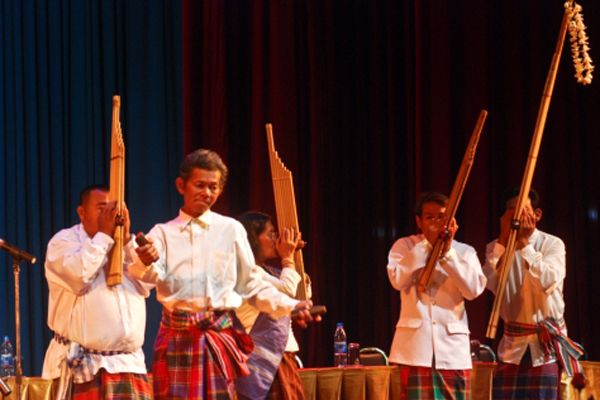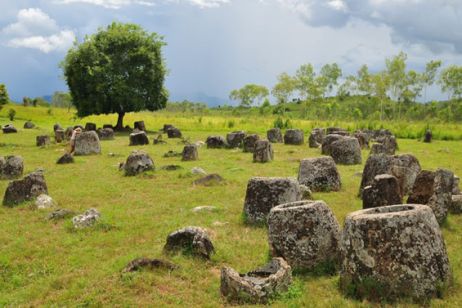Khaen, a feature in Lao culture
The khene, "khaen", "kaen" and "khen", is a mouth organ of Lao origin whose pipes, which are usually made of bamboo, are connected with a small, hollowed-out hardwood reservoir into which air is blown, creating a sound similar to that of the violin. Khene is one of the feature in Lao culture.
According to a popular saying, "those who eat sticky rice, live in dwellings mounted on piles, and listen to the music of the khaen are Lao." The khaen is a collection of bamboo pipes of different lengths, each with a small hole for fingering and a metal reed, preferably of silver, all attached to a mouthpiece. There are six-hole, fourteen-hole, sixteen-hole and eighteen-hole instruments. The most common khaen is the sixteen pipe version called khaen paat with 2 - 3.5 feet in length. The eighteen pipe version named khaen gao, reached 6 feet and more in length is no longer played because it was too long to carry.

A khaen musician accompanies amohlam performance, a traditional Lao entertainment that usually involves two singers, a man and a woman, and offers courting poetry, suggestive repartee, and dance. The songs and poetry represent oral literature passed on to performers by their teachers. Relatively few have been written down. Ability to add witty and rhyming repartee on the spot is valued. Males and females never touch in Lao dance.



